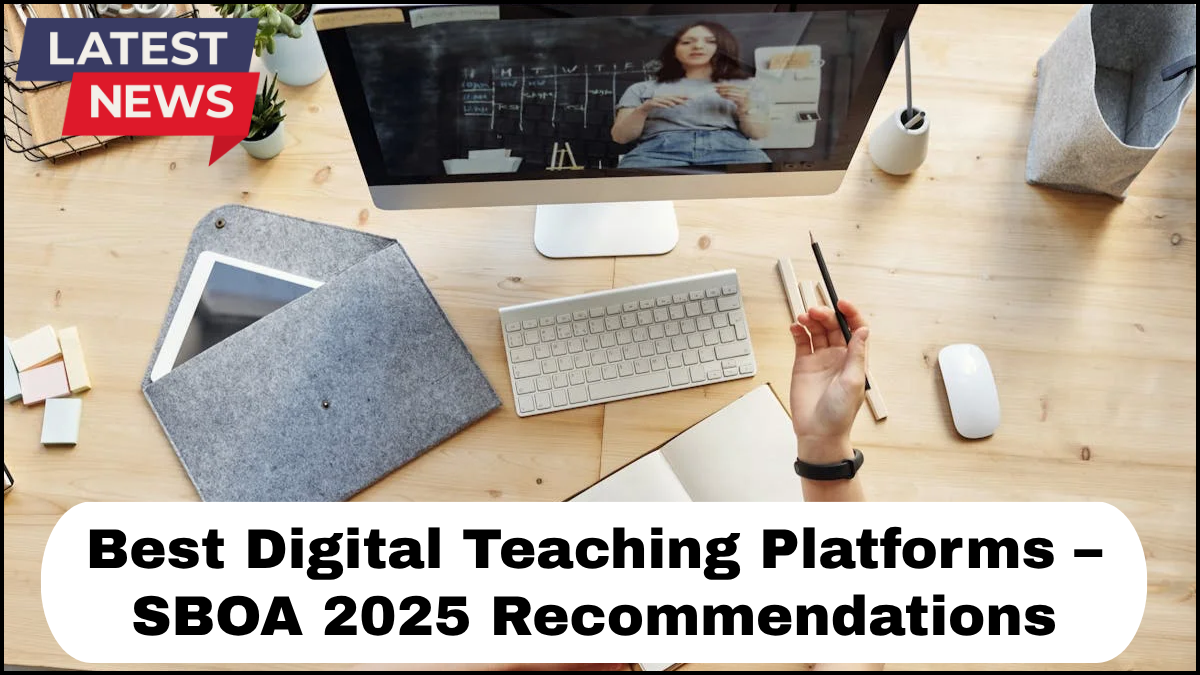As education rapidly evolves, Digital Teaching Platforms in 2025 have become essential tools for schools aiming to deliver flexible, engaging, and effective instruction. The SBOA (State Board of Academic Affairs) has curated a list of the most reliable, innovative, and scalable platforms that are setting the benchmark for modern education. These platforms aren’t just enhancing learning—they’re reshaping how knowledge is delivered in smart classrooms across the globe.

Here’s a detailed breakdown of the best digital teaching solutions that are transforming classrooms in 2025.
Google Classroom – Seamless Integration and Simplicity
Google Classroom continues to be a strong contender in the digital teaching space due to its simplicity, free access, and powerful integration with other Google Workspace tools. It allows teachers to manage assignments, provide real-time feedback, and collaborate with students in an organized, paperless way.
Why it works in 2025:
-
Enhanced with AI tools for automatic grading and plagiarism checks
-
Supports immersive video lessons through Google Meet
-
Direct integration with thousands of third-party educational apps
This platform fits well in both hybrid and fully remote learning environments, making it ideal for schools building modern smart classrooms.
Microsoft Teams for Education – A Robust All-in-One Hub
With powerful collaboration tools and seamless integration with Microsoft 365, Teams for Education offers a comprehensive environment for teachers and students alike. It has matured into a central hub for digital instruction.
Key features:
-
Built-in video conferencing
-
Secure cloud-based file storage
-
Customized class notebooks via OneNote
-
AI-powered student insights and progress tracking
Its secure framework and accessibility on all devices make it a go-to choice for institutions focusing on scalable Digital Teaching Platforms 2025.
Moodle – Open-Source Flexibility for Custom Learning
Moodle remains a leader among open-source learning management systems. In 2025, its flexibility allows institutions to fully customize learning experiences while maintaining complete control over data.
Notable capabilities:
-
Plugin-rich ecosystem for quizzes, attendance, grading, and analytics
-
Mobile-friendly user experience
-
Strong community support for updates and new features
Moodle is particularly well-suited for schools that want to build proprietary smart classroom systems without being tied to commercial software limitations.
Edmodo – Safe and Social for K–12 Classrooms
Edmodo stands out for its Facebook-like interface tailored for education, offering a safe and structured environment for K–12 learners. It fosters communication, collaboration, and parental involvement.
Why SBOA recommends Edmodo:
-
User-friendly interface for younger students
-
Built-in messaging, polls, and quizzes
-
Ability to loop in parents for progress tracking
-
Gamified learning elements to boost engagement
Edmodo’s strength lies in creating community-centered classrooms in a digital format, making it one of the most engaging digital teaching platforms 2025 has to offer for early education.
ClassDojo – Behavior and Engagement Focus
For schools emphasizing student behavior and positive reinforcement, ClassDojo is a powerful platform. In 2025, it continues to empower educators to manage classrooms while maintaining strong home-school connections.
Best features:
-
Real-time behavior tracking
-
Student digital portfolios
-
Easy sharing of photos, videos, and announcements
-
Language translation to include non-English-speaking families
Especially in smart classrooms where emotional and social development is a priority, ClassDojo adds immense value beyond academic content.
Khan Academy – Mastery-Based Learning at Scale
Khan Academy offers free, high-quality instructional materials across a wide range of subjects, making it a favorite among educators globally. By 2025, it has evolved with adaptive learning paths and advanced analytics for student performance.
Highlights:
-
Rich video library and interactive exercises
-
Real-time progress dashboards for teachers
-
Mastery-based approach encourages deep understanding
Its accessibility and no-cost model make Khan Academy a foundational piece in many public education systems utilizing digital teaching platforms in 2025.
Byju’s and Other AI-Driven Platforms – Personalized Learning at Its Peak
AI-powered platforms like Byju’s have redefined what personalized education looks like. These tools adapt in real-time to a student’s learning pace and preferences, delivering hyper-relevant content that optimizes outcomes.
AI features include:
-
Real-time performance analysis
-
Customized lesson paths
-
Voice and video-based engagement
-
Predictive analytics for early intervention
These platforms are now fully compatible with smart classrooms, making them ideal for institutions aiming to blend technology with pedagogy.
Final Thoughts
The SBOA 2025 recommendations reflect a shift toward intelligent, student-centered learning experiences. The best digital teaching platforms in 2025 aren’t just tools—they’re learning ecosystems that support teachers, engage students, and involve families. When integrated into smart classrooms, these platforms help build a future-ready education system capable of adapting to the needs of every learner.
FAQs
Q1: What makes a digital teaching platform suitable for smart classrooms?
A: The best platforms offer real-time collaboration tools, device compatibility, interactive content, data analytics, and secure communication—all of which support the dynamic nature of smart classrooms.
Q2: Are these digital teaching platforms suitable for all age groups?
A: Yes. Platforms like Edmodo and ClassDojo cater to K–12 learners, while Moodle and Microsoft Teams are more appropriate for higher education. Many platforms offer customization to fit different educational levels.
Q3: How can schools choose the right platform?
A: Schools should assess factors like budget, infrastructure, teaching goals, and student needs. Pilot testing and teacher feedback also play a key role in selecting the right digital teaching platform.
Q4: Do these platforms work offline?
A: Some platforms, like Moodle and Google Classroom, offer limited offline capabilities such as document viewing or draft assignments. However, a stable internet connection is typically required for full functionality.
Q5: Can digital teaching platforms replace teachers?
A: No. These tools are designed to support—not replace—teachers. They enhance the teaching process by automating tasks, personalizing learning, and expanding access to educational resources.
click here to learn more